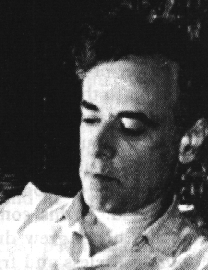


Lev Davidovich Landau
1908-1968



Lev Davidovich Landau
1908-1968
Born in Baku, 1908. Entered Baku University, 1922, transferred to Leningrad, 1924, in theoretical physics. Research student 1926-29. Spent one and one-half years at Copenhagen with Bohr and in England and Switzerland. On staff of the Leningrad Physicotechnical Institute, 1931. Head of theoretical physics, Khar'kov Physicotechnical Institute, 1932-35. Professor of Physics, Khar'kov University, 1935-37. Head of the Theoretical Division of the Institute of Physical Problems, 1937-68. Developed the "theoretical minimum" course sequence for theory graduate students, the basis of the Landau-Lifshitz text sequence. Elected to the Danish, Dutch, and U.S. Academies of Science, Foreign Member of the Royal Society of London. Awarded Nobel Prize in 1962 for pioneering work on condensed matter, especially the theory of superfluid liquid helium.
Introduced the density matrix in quantum physics, 1927. Predicted Landau diamagnetism, 1930, antiferromagnetism, 1933. Independent discovery of the 1931 Chandrasekhar limit on stellar masses, gravitational collapse, 1932. Theory of adiabatic energy transfer in atomic and nuclear collisions, 1932. Worked on a variety of problems in condensed matter physics during the 1930s. Other research included transport theory in plasmas, 1936, treatment of the nucleus as a quantum fluid and the determination of the statistical properties of energy level densities, 1937. Landau theory of second order phase transitions, connection with changes in symmetry, 1937. Theory of superfluidity of liquid 4He, roton spectrum, 1940-41. Theory of Landau damping of electronic plasma oscillations, 1946. Ginzburg-Landau theory of superconductivity, 1950. Relativistic hydrodynamic model for particle production in high energy collisions, generalizing Fermi's statistical model, 1953. Work on quantum electrodynamics, existence of Landau ghosts, 1954-55. Landau theory of Fermi liquids, 1956-58. Proposed two component neutrino and CP conservation in weak interactions, 1957, at same time as Lee and Yang, Salam, Marshak, and Sudarshan. Analytic properties of scattering amplitudes, Landau singularities, 1959.
Landau's scientific career ended when he suffered nearly fatal head injuries in an automobile accident in 1962. His standing was so high that, despite rather strained relations between the U.S. and the Soviet Union, the Soviet authorities urgently flew in a top brain surgeon from the U.S. to consult on Landau's condition. Landau recovered physically, but sadly never regained his mental sharpness.